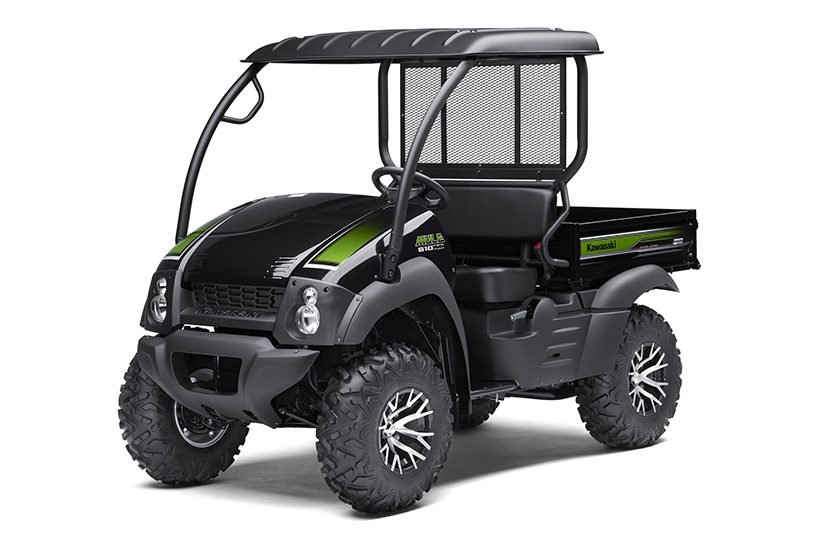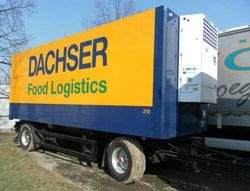
Short test: Subaru Outback 2.0DS Lineartronic Unlimited
Subaru has taken on a tough challenge with the Outback. He must have all the qualities that were intended for him - to be at the same time an SUV, station wagon and limousine. And something else is pronounced in the fifth generation, it can be seen in everything that it is primarily intended for American buyers. Well, don't blame Americans for the fact that we usually place less value on aesthetics and good design. In fact, the biggest change in the fifth generation of the Outback is that the look is now slightly improved. In terms of design, the Outback has been redesigned and updated just enough to make it easier to compete with the Allroad or Cross Country brands. Subaru also pursued a strategy of almost fully equipped versions for the Slovenian market. Which, on the one hand, is good because you can find almost everything a driver needs in it, especially considering that Subaru wants to flirt mainly with premium competitors and offer more at a more reasonable price.
In addition to the two-liter turbo diesel, you could also opt for the 2,5-liter gasoline boxer (at a very similar price). If anything, the Outback has an automatic transmission too. Subaru gave it the name Lineartronic, but it's a continuously variable transmission (CVT) with an accessory that defines the transmissions in seven steps. Unlike some other European markets, the Outback is only available with Eyesight brand accessories. It is an electronic system for monitoring driving safety and automatically braking or avoiding the danger of a collision with a vehicle in front. The most important component of this system is the stereo camera installed on the inside at the top of the windshield under the rearview mirror. With its help, the system receives data important for timely response (braking). This system replaces conventional sensors that use radar or laser beams for similar control.
The camera detects brake lights and can safely stop the vehicle at speeds up to 50 kilometers per hour or prevent serious collision consequences in the event of a speed difference between cars of up to 50 kilometers per hour. Of course, we have not tried both of these options, but in normal driving with active cruise control, it is quite convincing. At that time, this allows you to drive the car very safely and stop even in columns. After the first dubious attempt and bringing our right foot as close as possible to the brake pedal, we were convinced that the thing really works and will definitely come in handy in normal movement. For safety reasons, after the vehicle in front of us starts and the ride can continue, the Outback waits for the driver's approval, gently depressing the accelerator pedal, and then resumes the almost automatic ride (perfectly safe). The system is also very useful in practice due to its quick reaction when changing the safe distance of the driver in front of us, if, for example, a car crashed into a convoy.
It is worth noting that the Outback performed well with its system in the emergency braking performance comparison test prepared by German Auto, Motor und Sport. The Outback also has four-wheel drive, and here we can say that its use is actually fully automatic and it is difficult to determine if it adapts the power transmission to the front or rear pair of wheels and as Active Torque Split). Everything works completely independently of the will of the driver. There is also a button marked X-Mode and a button for controlled descent on the center lug just behind the automatic transmission shift lever. In both cases, there is a fully electronic control of events.
X-Mode changes the software support for driving on slippery surfaces, but the driver does not have the ability to apply locking or locking the wheels. In practice, of course, this means that with all-wheel drive in the Outback, we cannot get out of a really difficult situation where the wheels no longer go forward or backward due to spin. However, the Outback is designed primarily for driving on normal roads, in all cases it will be quite comfortable on this. In addition to the already mentioned limitations of extreme driving capabilities, the distance to the ground also prevents us from driving off-road. It is set slightly higher than conventional cars, making it easier to climb higher curbs or the like. The higher center of gravity does not have a fatal effect on the road position, but even here it is necessary to make compromises for faster driving and take into account the difference in Outback.
The only unconvincing detail of the new Outback is a two-liter turbodiesel. On paper, its power still seems to be quite acceptable, but in practice, along with a rather random transmission, it does not turn out to be inflatable. If we really want to push the Outback forward a little more forcefully at some point (when overtaking or going uphill, for example), we have to press the gas pedal hard. The engine then hums almost roaring and warns that he doesn't like it very much. In general, one would expect slightly more moderate consumption of a turbodiesel (even taking into account the automatic transmission and all-wheel drive). What seems to be the best thing about the Outback, and it was mentioned in the intro that it was designed with American taste in mind, is the emphasis on ease of use. It may take a few minutes for the Outback owner to get familiar with all the possible usability features at the beginning (it's good that he speaks at least one foreign language, because there are no instructions in Slovenian). But then using all this is really nice and easy, as we think the Americans want it.
word: Tomaž Porekar
Outback 2.0DS Lineartronic Unlimited (2015)
Basic data
| Sales: | Subaru Italy |
|---|---|
| Base model price: | 38.690 € |
| Test model cost: | 47.275 € |
| Power: | 110kW (150 KM) |
| Acceleration (0-100 km / h): | 9,9 with |
| Maximum speed: | 192 km / h |
| Mixed flow ECE: | 6,1l / 100km |
Costs (per year)
Technical information
| engine: | 4-cylinder - 4-stroke - boxer - turbodiesel - mounted transversely at the front - displacement 1.998 cm3 - maximum output 110 kW (150 hp) at 3.600 rpm - maximum torque 350 Nm at 1.600–2.800 rpm . |
|---|---|
| Energy transfer: | the engine drives all four wheels - stepless automatic transmission - tires 225/60 / R18 H (Pirelli Winter 210 Sottozero). |
| Capacity: | top speed 192 km / h - acceleration 0-100 km / h 9,9 - fuel consumption (ECE) 7,5 / 5,3 / 6,1 l / 100 km, CO2 emissions 159 g / km. |
| Mass: | empty vehicle 1.689 kg - permissible gross weight 2.130 kg. |
| External dimensions: | length 4.815 mm – width 1.840 mm – height 1.605 mm – wheelbase 2.745 mm – trunk 560–1.848 60 l – fuel tank XNUMX l. |
Our measurements
| T = 11 ° C / p = 1.048 mbar / rel. vl. = 69% / odometer status: 6.721 km | |
| Acceleration 0-100km: | 11,8s |
|---|---|
| 402m from the city: | 17,9 years ( 125 km / h) |
| Flexibility 50-90km / h: | Measurement is not possible with this type of gearbox. S |
| Maximum speed: | 192km / h (Gear lever in position D) |
| test consumption: | 8,4 l / 100km |
| Fuel consumption according to the standard scheme: | 7,2 l / 100km |
| Braking distance at 100 km / h: | 37,6m |
| AM table: | 40m |
evaluation
Outback is an interesting alternative to buying a car with all-wheel drive and automatic transmission, especially if the buyer is looking for comfort and reliability.
We praise and reproach
driving comfort
electronic support (active cruise control)
ergonomics
Interior Design
setting reminders for various service tasks
open space
engine (power and economy)
toy: power control function in the on-board computer
low permissible load weight

